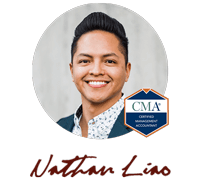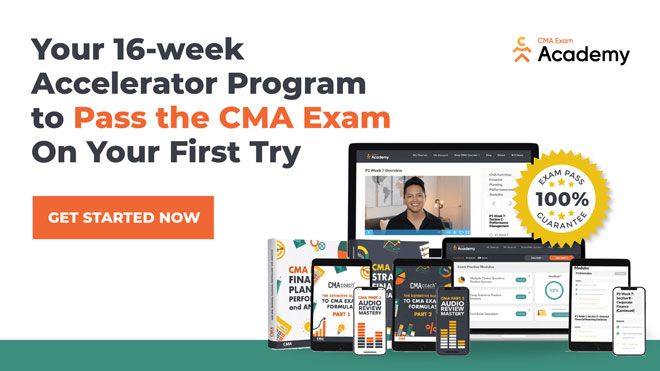Business budgeting is an extremely important financial tool available to any enterprise and it’s a big area of study for the CMA exam. Maintaining both short and long-term financial plans enable enterprises to control their cash flow, profitability, cost, etc. Here’s a list of the top 10 best practices of budgeting:
Best Practice #1: Short & Long-Term Plans
The most efficient financial budget comprises of both short-term month-to-month plan for a minimum of one calendar year, and a long-term quarter-to-quarter plan. This budget should be developed two months prior to the fiscal year-end to allow plenty of time for adequate information-gathering and analysis.
Ideally, the long-term plan should cover a minimum period of three years on a quarterly basis. The long-term plan should be updated as and when the short-term plan is prepared each year.
Best Practice #2: Flexibility
While many enterprise owners choose to leave the budget unaltered during the year, others modify the budget during the year depending upon certain financial incidents, such as a larger-than-expected sales trend or an unplanned equipment purchase.
Employing the budget as a continued planning tool during a given year is definitely recommended. Nonetheless, here is a word of caution: Financial budgeting is crucial, but it’s also vital to refrain from getting so entangled in the budgeting process that other parts of the financial operation are ignored.
Best Practice #3: Various Types of Budgets
Usually, financial budgets present a plan solely for the income statement. Nevertheless, it’s critical to budget for the balance sheet, cash flow and capital expenditures as well. This enables organizations to think about potential cash-flow requirements for their whole operation, not just as they concern to income and expenses.
For example, if an enterprise has been active for the few past years and considered adding a new product line, it would need to consider the effect of inventory acquisition on cash flow. Budgeting just the income statement also does not permit a complete analysis of the effect of possible capital expenditures on an enterprise’s financial picture.
For example, if an enterprise is planning to acquire real estate for its operation, it needs to budget the effect which servicing this debt will have on cash flow.
Best Practice #4: Automation
For the preparation of the budget, an enterprise can do it manually or use the budgeting function that is available with all bookkeeping software packages. An enterprise can also utilize independent budgeting software such as Alight Planning, Microsoft Money, Quickbooks, or Quicken.
With so many advances in technology, the best practice would be to implement an electronic system that can help streamline the overall budgeting review and approval process.
Best Practice #5: Sales Budget First
Devising a plan for the next year on a month-to-month basis is the first step. An enterprise must begin with the first month, and establish precise budgeted dollar levels for each section of the budget.
Here, the sales numbers will be vital because they’ll be used to calculate gross profit margin and will determine operating expenses. The sales numbers also determines the accounts receivable and inventory status necessary to support the business.
For determining the amount of product or service an enterprise can sell, it will have to study the market in which it operates, its competition, potential demand that it might already have witnessed and economic circumstances. For the cost of goods sold, it’ll be necessary to compute the actual costs related with producing each unit on a percentage basis.
Best Practice #6: Expense Allocation
For operating expenses, an enterprise should consider items such as depreciation, auto, insurance, advertising, and so on. The enterprise should factor in the actual business tax rate that it can obtain from its accountant.
On the balance sheet, the enterprise should break down inventory by section. For example, a clothing manufacturer has unfinished materials, finished goods, and work-in-progress.
For inventory, accounts payable and accounts receivable, the enterprise will figure the total amounts to budget depending on a predetermined number of days on hand as shown in the activity ratios of the organization.
Best Practice #7: Assets & Liabilities
An organization should consider each particular item in fixed assets split by equipment, investments, real estate, and so on. If the enterprise needs a franchise fee or patents or copyrights, this will be shown as an intangible asset.
It should break down every single bank loan separately on the liability side. The same should be done for the stockholders’ equity – preferred stock, treasury stock, common stock, paid-in-capital, and retained earnings.
Best Practice #8: Seasonality
The whole process stated in Best Practice #7 should be done for every month for the first 12 months. Later, quarter-to-quarter budgets for the subsequent two years must be prepared.
For the first year’s budget, it is important for the enterprise to take into account seasonality factors. For instance, most retailers experience exceedingly good sales from October to December. Likewise, if a business is highly seasonal, it will have wide-ranging variations in cash-flow requirements. Hence, it is extremely important for an enterprise to consider seasonality when planning its budget.
This will help the enterprise in NOT just considering its annual projected year-one gross sales only and dividing it by 12.
Best Practice #9: Order of Budgets
For the whole budgeting process, an enterprise needs to draw up the income statement first. Later, balance sheet and cash flow can be prepared. The enterprise needs to know the net income figure before preparing a pro forma balance sheet since the profit number must be written into retained earnings.
For the cash-flow projection, the enterprise will require the balance sheet and the income statement figures.
Best Practice #10: Importance of CMAs in the Budgeting Process
Regardless of whether an organization budgets manually or uses software, it’s strongly advised to seek valuable inputs from the CMA in preparing the enterprise’s initial budget. The enterprise may want to engage a CMA to develop the financial plan, or it may simply involve the CMA in an advisory capacity.
Regardless of the level of involvement, the CMA’s insights will prove invaluable in contributing an independent review of an enterprise’s short and long-term financial design.
If you would like to receive free content and exam tips via email, please subscribe using the form below. I wouldn’t want you to miss out on these golden nuggets.

Hi, I’m Nathan Liao (aka the CMA Coach)! For the last 10 years, over 82,000 accounting and finance pros came knocking at my door seeking guidance and help. If you’re also aiming to conquer the CMA exam on your very first try—without wasting away time or money—you’ve found your ultimate guide. Dive in deeper to discover more about me and the dedicated team that powers CMA Exam Academy. Click here and let’s embark on this journey together!


